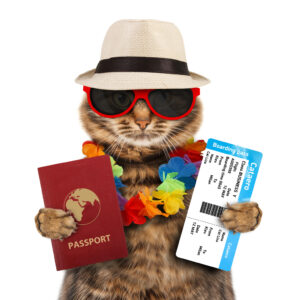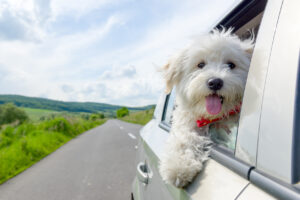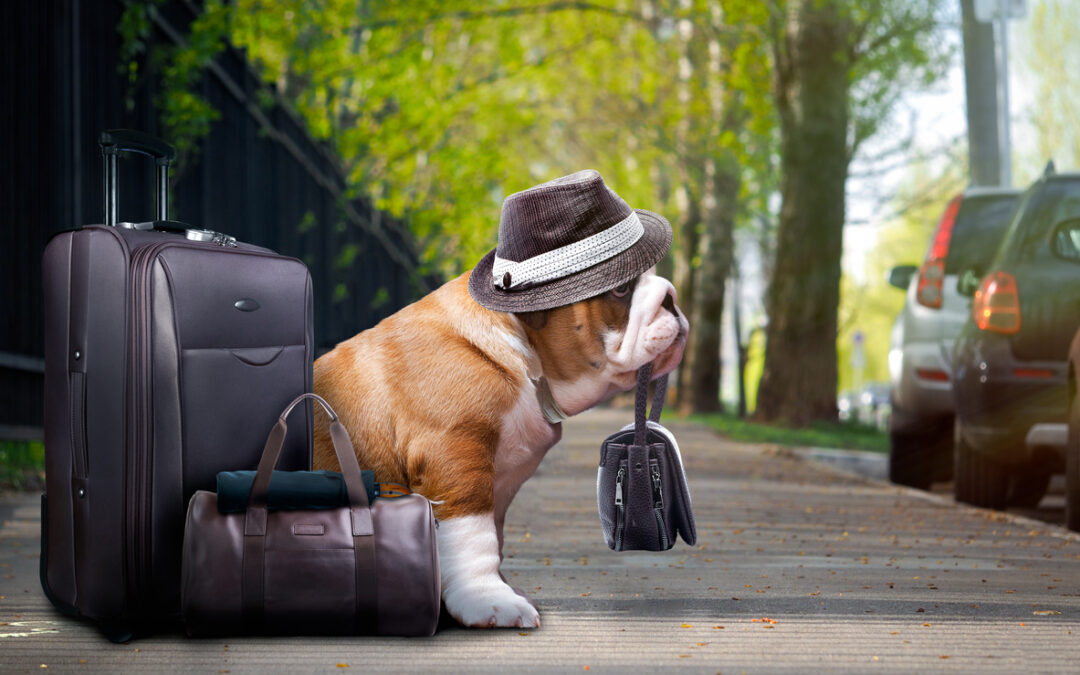Travel Happy and Healthy With Your Pet
 Many pet owners are reluctant to leave their pets alone at home unattended or can’t afford to board their pets while they’re gone. But bringing a pet on a trip can be stressful for everyone, especially if you’re unprepared, and it can take a toll on a pet’s physical and mental well-being.
Many pet owners are reluctant to leave their pets alone at home unattended or can’t afford to board their pets while they’re gone. But bringing a pet on a trip can be stressful for everyone, especially if you’re unprepared, and it can take a toll on a pet’s physical and mental well-being.
Don’t travel unprepared. Follow these simple instructions, so you have a safe, happy, healthy trip with your pet.
Is Your Pet Safe for Travel?
Not all pets are up to traveling. If your pet has serious behavioral problems, anxiety or health issues, you’re probably better off board Witing your pet or finding a sitter.
If you still must travel with your pet, you’re going to have to take extra precautions to keep them safe, healthy and happy during your journey. Even if you’re confident about your pet’s health, schedule an appointment with your vet before you leave. They’ll make sure your pet’s vaccinations and papers are up to date, and they may be able to prescribe you particular medications to make the trip easier on everyone — such as anti-nausea meds for car trips or anti-anxiety pills for stressful trips.
Bring a Kit
Before you leave, make a list of everything you’ll need to bring with for your pet’s health and happiness. Here’s a list of minimal requirements:
- Food. Bring more than enough for the trip, so you don’t run out.
- Bowls for food and water.
- Bottled water, especially if you’re camping or traveling abroad.
- Medication. Be sure to bring a little extra in case your trip runs longer than expected.
- A waste scoop, as well as any rags or paper towels to clean up messes.
- Toys and things to chew on, so your pet can work out nervous energy.
- A leash.
- A collar, marked with the pet’s name, as well as yours and your contact information.
- A well-ventilated carrier or crate. Be sure your full name and contact information are on the crate in case you’re separated from your pet in transit.
- A pillow or blanket.
- Bring your pet’s vaccination papers, dated within 10 days of your departure.
- Look up emergency contact info for any vets in the area you’re traveling to.
Traveling by Plane
 When traveling by plane, take a direct flight to minimize your pet’s time in the crate. Administer any anti-anxiety medication before you part ways with your pet. Leave water in your pet’s carrier, and put a small amount of dry food outside of the crate so workers can feed your pet.
When traveling by plane, take a direct flight to minimize your pet’s time in the crate. Administer any anti-anxiety medication before you part ways with your pet. Leave water in your pet’s carrier, and put a small amount of dry food outside of the crate so workers can feed your pet.
Inform every airline employee you meet, both on the ground and in the air, that you’re traveling with a pet in the cargo hold. And don’t hesitate to ask them to check on your pet and feed them if your flight is delayed or if there are other problems: This is part of their job.
Traveling by Car
 If you’re traveling with your pet by car, try out short car trips with your pet in the weeks leading up to the journey. Keep an eye out for any anxiety or car sickness, and bring these up to your vet.
If you’re traveling with your pet by car, try out short car trips with your pet in the weeks leading up to the journey. Keep an eye out for any anxiety or car sickness, and bring these up to your vet.
Don’t leave your pet alone in a locked vehicle, even if the weather’s cool: Cars overheat quickly, and your pet can suffer from heatstroke. Be sure your pet is leashed or crated, so they can’t wander around and distract you while you’re driving. Finally, don’t let your pet stick their head out the window — it’s not safe.
Traveling with your pet can be difficult. But if you plan ahead, pack wisely and make arrangements with a vet in advance, you’ll have a safe, happy trip with one of your best friends.

